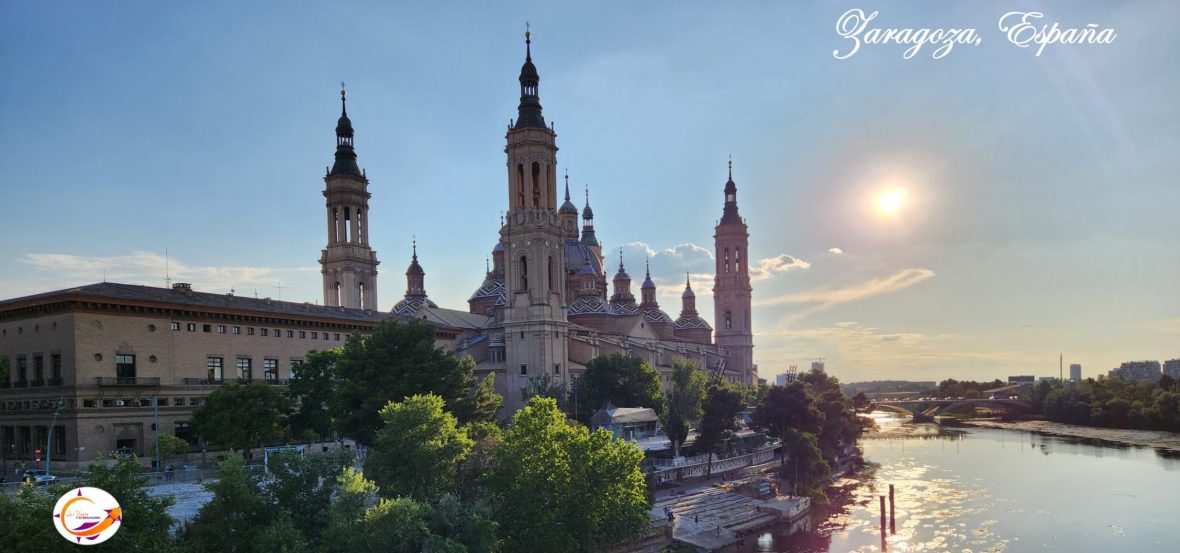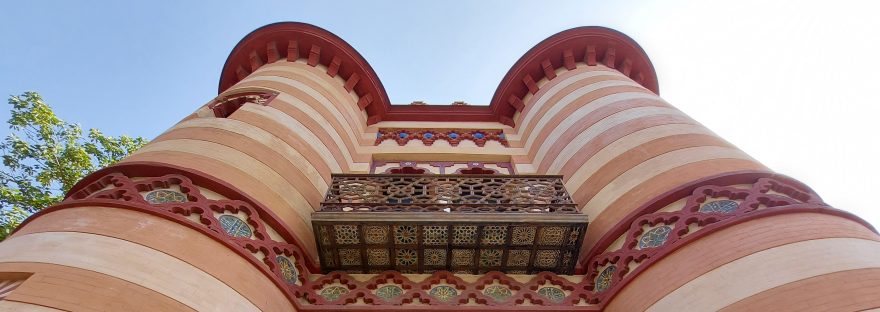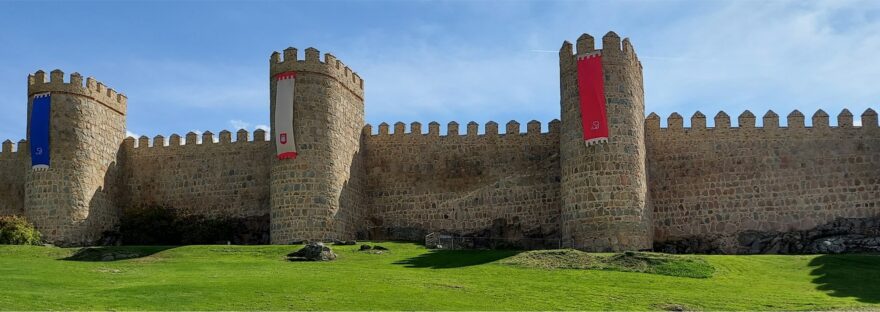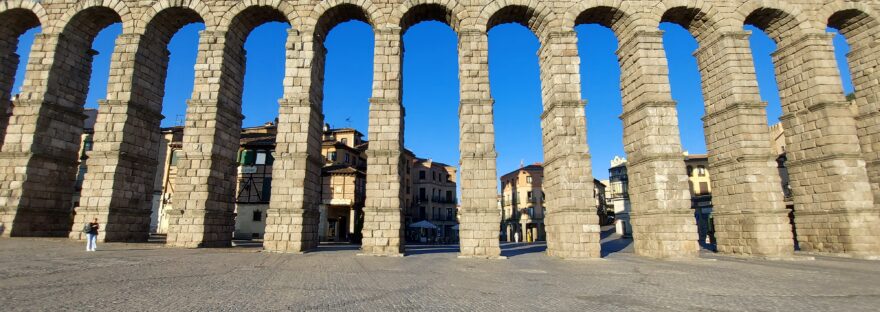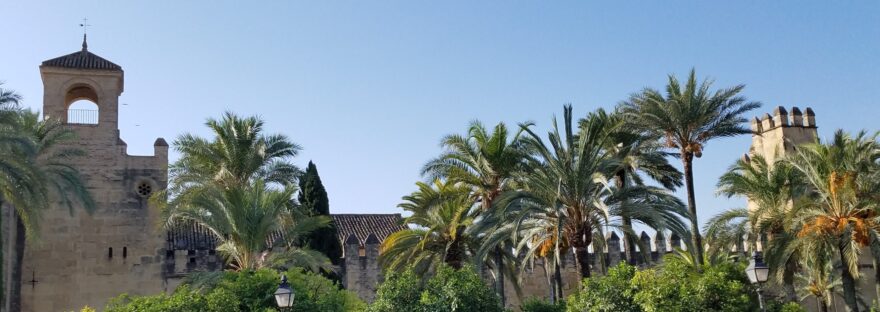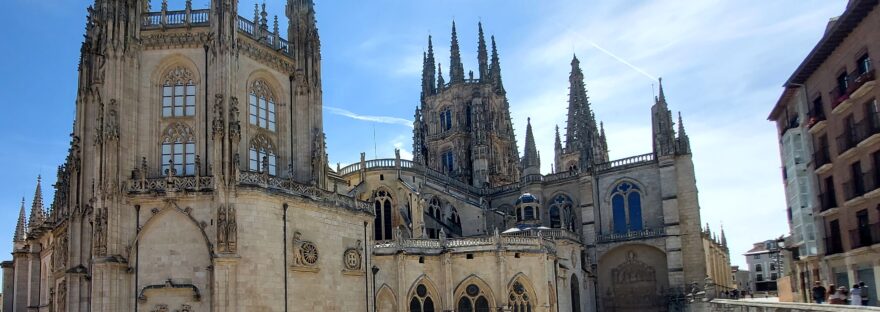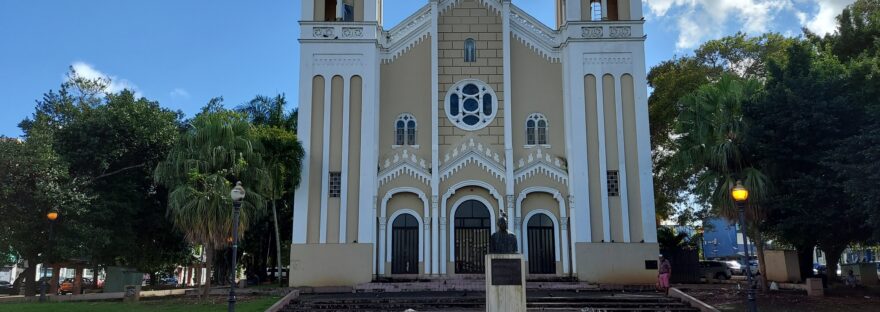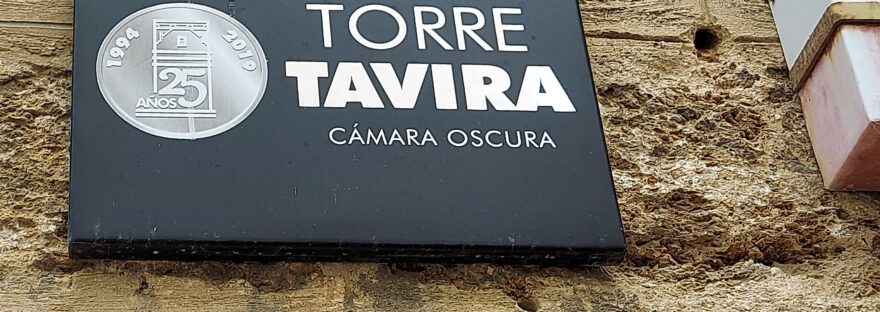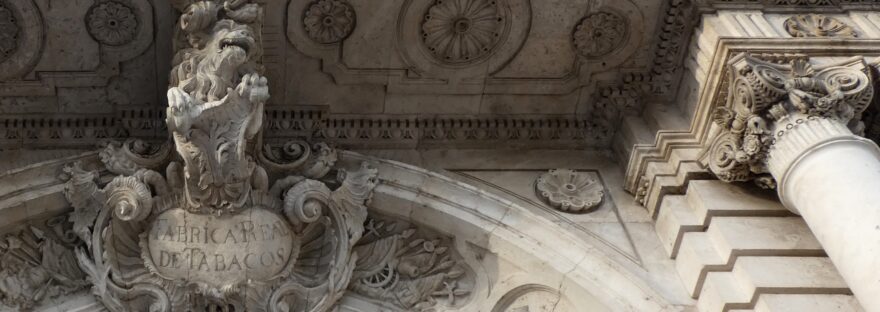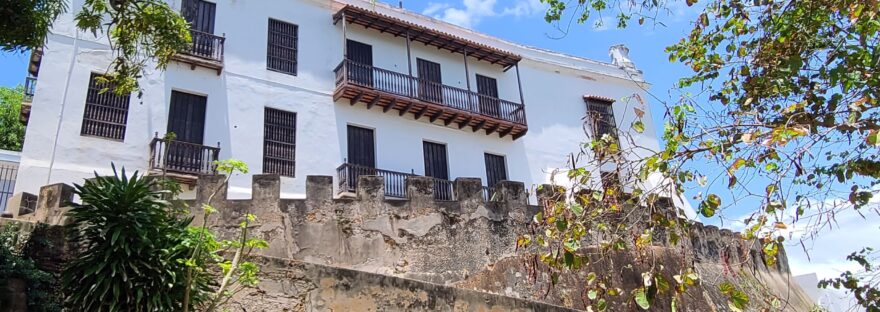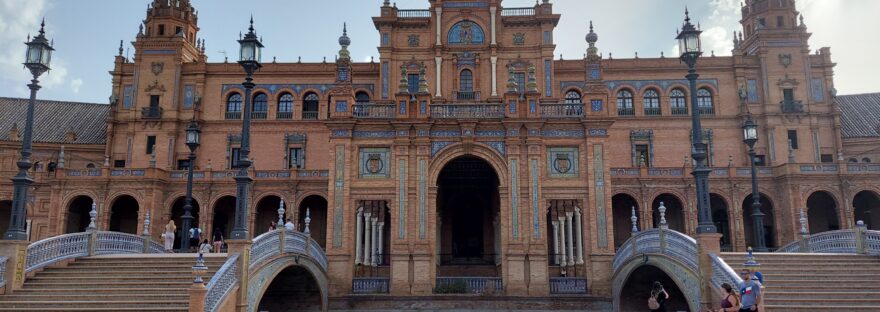In Seville, located next to the Maria Luisa Park, there is a small castle that stands out a lot of attention, it is the Queen’s Sewing Room (Costurero de la Reina). Continue reading “The Queen’s Sewing Room”
Category: Country
Avila, the Walled City
Considered the best preserved medieval walled enclosure of Spain and probably of all Europe, the walls of Avila are its most outstanding monument. During a visit to Avila during the month of August, a traditional Medieval Festival was being celebrated. As a result, the walls were decorated for the occasion. Continue reading “Avila, the Walled City”
Segovia and its Roman Aqueduct
After seeing countless published photos of the Aqueduct of Segovia, we could not miss this beautiful Spanish city and observe at first sight this great monument.
The Christian Monarchs’ Castle in Cordoba
The first time in the Andalusian city of Cordoba, we were unable visit its Alcazar or castle, given it was Monday and was closed. We regretted it very much and at that time decided to concentrate viewing its exterior. We were very struck by its walls, high and very sober, a very simple exterior architecture, military type. It has an almost square shape, with a tower at each of its four corners. At first glance, the palms and trees in the foreground hides the structure and its beauty.
We peeked through the railings of a garden that is located to right side of the main entrance. When we observed the beauty peeking through the bars of those railings, we promised ourselves that we would return, and so we did. What awaited us inside exceeded all the beauty we had imagined. Continue reading “The Christian Monarchs’ Castle in Cordoba”
Burgos and its Holy Church Cathedral Metropolitan Basilica of Holy Mary
We left Madrid just before dawn to catch the bus that would take us to visit what was once the capital city of the Castilian-Leonese Kingdom, one of the most modern and elegant cities of its time, Burgos.
Once we arrived at the bus station, it only took us five minutes to cross the bridge and go through the Arch of Santa Maria to get to the Plaza Rey San Fernando. Arriving there, we were completely amazed to see in front of us and in all its splendor, the “Santa Iglesia Catedral Basílica Metropolitana de Santa María” (Holy Church Cathedral Metropolitan Basilica of Holy Mary), more commonly known as the Cathedral of “Santa María de Burgos”. Continue reading “Burgos and its Holy Church Cathedral Metropolitan Basilica of Holy Mary”
Our Lady of the Pilar Church
While visiting Rio Piedras (Puerto Rico), we strolled about the “Plaza de Recreo” and there she was standing tall, the Our Lady of the Pilar Church. It was Thursday, January 6, 2022, the Day of the Three Kings, the mass celebrating the Epiphany had just concluded and we did not think twice about discovering her. Continue reading “Our Lady of the Pilar Church”
Cádiz, the Tavira Tower and its Camera Obscura
We had not yet had the experience of visiting a Camera Obscura (also known as a Dark Chamber or Dark Camera), and so we include it in our list of places to visit in Cadiz. In fact, the Camera Obscura of Cadiz is one of nine that exist in Spain. Continue reading “Cádiz, the Tavira Tower and its Camera Obscura”
Royal Tobacco Factory of Seville
Due to its large dimensions it is catalogued by some as the “Escorial tabaquero”, or the Palace of the (Tobacco) Industry. Surely they are not mistaken, the Royal Tobacco Factory of Seville is undoubtedly the largest industrial building of the eighteenth century and the best architecture of its kind in Spain. In addition, it is one of the oldest of this type of structure that is preserved, being the headquarters of the first tobacco factory established in Europe. Continue reading “Royal Tobacco Factory of Seville”
The White House of Puerto Rico
We longed desired to visit a building that is observed looming over a great wall, grew with each visit to Old San Juan. It is “la Casa Blanca” or the White House. It is the structure in Puerto Rico and in all of the Americas that has been open and operational for the longest period of time with over 500 years since constructed. The White House / Casa Blanca is located at the start of the San Sebastian Street and the corner of the Casa Blanca Street in Old San Juan, being the first fortification on the islet of Puerto Rico, today known as San Juan. Continue reading “The White House of Puerto Rico”
The Plaza of Spain in Seville; it embraces
At any time of the day, the “Plaza de España” in Seville is ready to welcome all those who visit it with a big hug. Perhaps, that semi-elliptical shape that stands out in the structure, can be considered as the embrace of Spain to its American territories and the Ibero-American people during the 1929 Exposition. Continue reading “The Plaza of Spain in Seville; it embraces”
